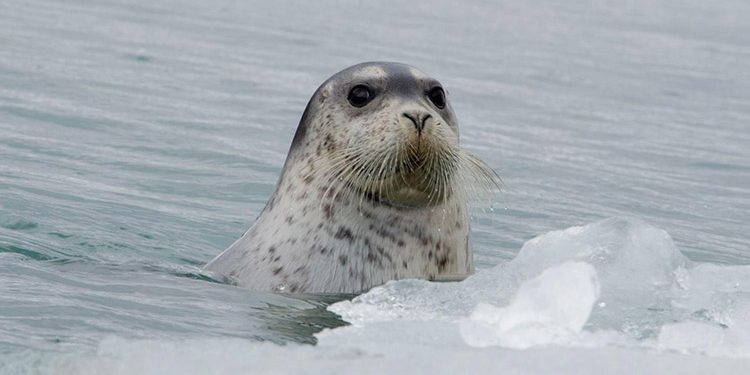Rosneft: March 3 – World Wildlife Day
Today is World Wildlife Day, established by the UN General Assembly in 2013. This initiative aims to draw additional attention to the need to preserve and protect wild flora and fauna.
Caring for the environment is an integral part of Rosneft’s corporate culture and activities. To achieve the best performance in this area, Rosneft is constantly improving its approaches to environmental management, increasing the scale of environmental measures and the necessary investments in environmental protection. The Company’s “green” investments over the past three years amounted to RUB 120 billion.
One of the important areas of Rosneft’s activities is the preservation and restoration of forests. Demonstrating its commitment to achieving the UN Sustainable Development Goals, the Company is implementing a comprehensive reforestation program. In 2020, Rosneft and its subsidiaries planted over 1.5 million trees, and over the past three years – over 3.5 million seedlings.
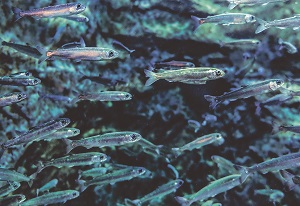 Caring for aquatic biological resources is another important priority of the Company’s environmental agenda. Rosneft is focused on the rational use of water resources within the framework of its activities and is taking a set of measures to protect and replenish them. More than 60 subsidiaries of the Company in 2020 released over 65 million fry of various types of fish (Siberian sturgeon, muksun, peled, salmon, etc.) into the river systems of Russia.
Caring for aquatic biological resources is another important priority of the Company’s environmental agenda. Rosneft is focused on the rational use of water resources within the framework of its activities and is taking a set of measures to protect and replenish them. More than 60 subsidiaries of the Company in 2020 released over 65 million fry of various types of fish (Siberian sturgeon, muksun, peled, salmon, etc.) into the river systems of Russia.
Taking care of the preservation of the animal world and maintaining a stable state of ecosystems, the Company also implements a number of programs for the study and conservation of wild animals in the regions of its presence.
Since 2015, Rosneft has been implementing a program for the conservation of the biological diversity of marine ecosystems at its license areas in the Russian Arctic zone. The program includes activities aimed at researching the marine environment, observing indicator species of flora and fauna, scientifically based assessment of the ecological sensitivity of territory and habitats, collection and analysis of stock information on the state of the environment, and much more.
Rosneft is implementing a program for the study and conservation of polar bears, Atlantic walrus, wild reindeer and ivory gulls. These species belong to the so-called biological indicators – according to the state of their population and migration routes, one can effectively assess the sustainability of the Arctic ecosystem as a whole.
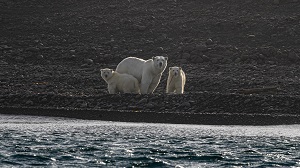 The polar bear is one of the main species-indicators of the steady state of the Arctic ecosystems, the top of the trophic chain. One of the main tasks of polar bear research is to assess the current state of populations. During the expeditionary work carried out by Rosneft, a set of studies is being carried out, including accompanying ship observations and registration of encounters with polar bears, non-invasive collection of biological samples from encountered individuals and marking with satellite beacons. Over the past period, more than 500 encounters with polar bears have been registered, more than 30 animals have been examined in detail, more than 500 biological samples have been selected and analyzed.
The polar bear is one of the main species-indicators of the steady state of the Arctic ecosystems, the top of the trophic chain. One of the main tasks of polar bear research is to assess the current state of populations. During the expeditionary work carried out by Rosneft, a set of studies is being carried out, including accompanying ship observations and registration of encounters with polar bears, non-invasive collection of biological samples from encountered individuals and marking with satellite beacons. Over the past period, more than 500 encounters with polar bears have been registered, more than 30 animals have been examined in detail, more than 500 biological samples have been selected and analyzed.
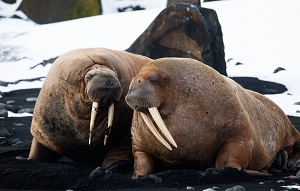 Rosneft is a member of the Expert Advisory Council for the Study and Conservation of the Atlantic Walrus and supports research on its population. Regular observations have been carried out since 2016, and in 2019 unique data were obtained on the distribution, laying, migration routes of the Atlantic walrus subspecies on the islands of Matveev, Dolgiy, Golets in the Pechora Sea. During the expedition with the participation of the Company in 2020 to the islands of the Franz Josef Land archipelago, as well as the Oran Islands and Victoria Island, most of the known walrus habitats were surveyed, and marine benthic ecosystems were examined to assess their food supply.
Rosneft is a member of the Expert Advisory Council for the Study and Conservation of the Atlantic Walrus and supports research on its population. Regular observations have been carried out since 2016, and in 2019 unique data were obtained on the distribution, laying, migration routes of the Atlantic walrus subspecies on the islands of Matveev, Dolgiy, Golets in the Pechora Sea. During the expedition with the participation of the Company in 2020 to the islands of the Franz Josef Land archipelago, as well as the Oran Islands and Victoria Island, most of the known walrus habitats were surveyed, and marine benthic ecosystems were examined to assess their food supply.
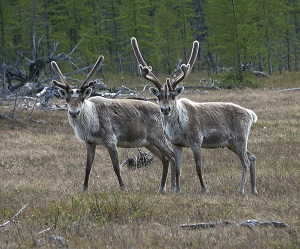 Since 2014, Rosneft has been implementing an annual program to support research on the migration of wild reindeer in the Evenki and Taimyr districts of the Krasnoyarsk Territory. Deer is the basis of the entire ecosystem of the Arctic North and the most important component of the traditional way of life of the indigenous peoples of the North. Within the framework of the program, data on the full annual cycle of animal migration were obtained, and seasonal features of their movement were identified depending on weather conditions and other habitat factors.
Since 2014, Rosneft has been implementing an annual program to support research on the migration of wild reindeer in the Evenki and Taimyr districts of the Krasnoyarsk Territory. Deer is the basis of the entire ecosystem of the Arctic North and the most important component of the traditional way of life of the indigenous peoples of the North. Within the framework of the program, data on the full annual cycle of animal migration were obtained, and seasonal features of their movement were identified depending on weather conditions and other habitat factors.
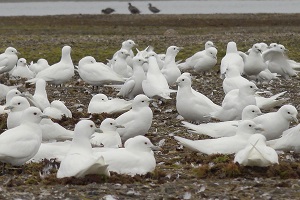 In 2020, Rosneft launched a comprehensive study of the ivory gull. Ivory gull is a rare bird species listed in the Red Book of Russia. The remoteness and inaccessibility of bird habitats and nesting sites significantly complicate studies, which until recently were fragmentary. The expedition in 2020 took place on Vize Island in the Kara Sea and took about two months, covering the entire nesting period of ivory gulls. Aerial observations, ground surveys of nesting sites were carried out, camera traps were installed on the territory of the bird colony. Thanks to this, scientists will obtain unique data on the movement of ivory gulls.
In 2020, Rosneft launched a comprehensive study of the ivory gull. Ivory gull is a rare bird species listed in the Red Book of Russia. The remoteness and inaccessibility of bird habitats and nesting sites significantly complicate studies, which until recently were fragmentary. The expedition in 2020 took place on Vize Island in the Kara Sea and took about two months, covering the entire nesting period of ivory gulls. Aerial observations, ground surveys of nesting sites were carried out, camera traps were installed on the territory of the bird colony. Thanks to this, scientists will obtain unique data on the movement of ivory gulls.
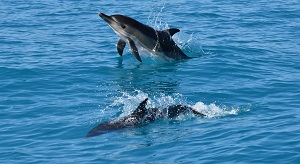 Rosneft together with scientists from the Institute of Oceanology named after P.P. Shirshova in 2018 initiated a three-year project to research the dolphins of the Black Sea. Within the framework of this project, two full-scale sea expeditions were carried out along the coast of the Krasnodar Territory, each with a length of about 1000 km. Based on the results of the expeditions, schematic maps of the seasonal distribution of cetaceans were compiled. In addition, for the first time, a qualitative and quantitative description of the sound signals of the Black Sea dolphins living in nature was made.
Rosneft together with scientists from the Institute of Oceanology named after P.P. Shirshova in 2018 initiated a three-year project to research the dolphins of the Black Sea. Within the framework of this project, two full-scale sea expeditions were carried out along the coast of the Krasnodar Territory, each with a length of about 1000 km. Based on the results of the expeditions, schematic maps of the seasonal distribution of cetaceans were compiled. In addition, for the first time, a qualitative and quantitative description of the sound signals of the Black Sea dolphins living in nature was made.
Rosneft supports programs for the study and conservation of Amur tiger populations, ANO Amur Tiger Center. The company finances the purchase of the necessary machinery and equipment for state hunting inspectors exercising control in specially protected natural areas of the Primorsky and Khabarovsk Territories, supports centers for the rehabilitation and reintroduction of the Amur tiger, feeding and veterinary support of animals, special equipment for training tigers released into the wild, independent hunting and conflict-free coexistence with a person.
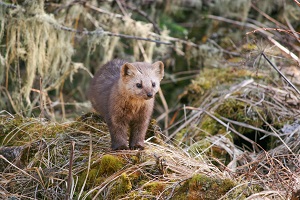 The State Natural Biosphere Reserve “Central Siberian” conducts regular studies of the movement of Siberian sable on the territory of the Evenki region of the Krasnoyarsk Territory. The data obtained make it possible to develop recommendations for the rational use of sable, contributing to the preservation of its population and sustainable socio-economic development of the region.
The State Natural Biosphere Reserve “Central Siberian” conducts regular studies of the movement of Siberian sable on the territory of the Evenki region of the Krasnoyarsk Territory. The data obtained make it possible to develop recommendations for the rational use of sable, contributing to the preservation of its population and sustainable socio-economic development of the region.

